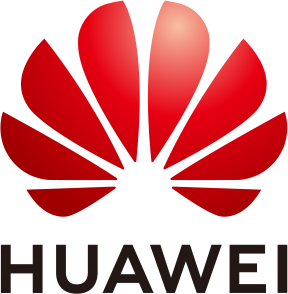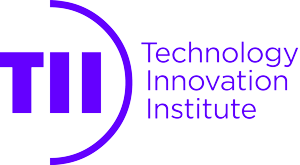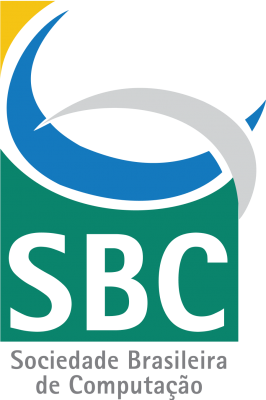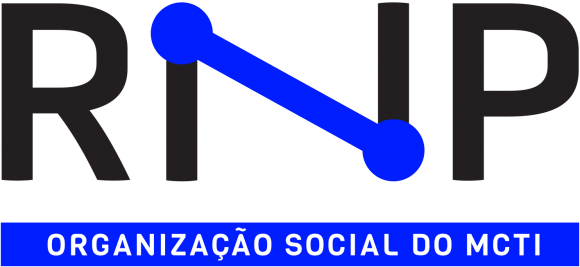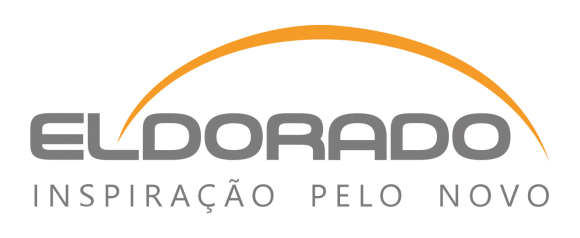SIXTH IEEE INTERNATIONAL WORKSHOP ON TERAHERTZ COMMUNICATIONS
Thursday, 8 DECEMBER 2022
KEYNOTES
Keynote 1: Sub-THz Role in Cellular Evolution
Speaker: Mark Cudak, Department Head, Radio Interface and Standards, Nokia Standards
Abstract: Sub-THz is an exciting new opportunity for wireless communication and one that is being actively pursued in many of the world’s 6G forums. This talk will discuss the variety of spectrum that industry is considering for 6G and the unique role that that sub-THz plays in cellular evolution. The talk will further discuss the regulatory status in the U.S. and some of the technical challenges that remain to be resolved.
Biography: Mark Cudak is a Nokia Bell Labs Fellow and a Department Head in the Radio Interface and Access Group with Nokia Standards in Chicago. He leads a team focusing on cellular air-interface evolution including 5G and 6G. He and his team are active in the 3GPP and Open RAN standards working on physical layer topics including system performance, link performance, transceiver architectures, network architectures and deployment scenarios. Mark and his team at Nokia have also been very active in sub-THz research. Mark serves as chairmen of the mmWave Coalition which is a is a group of 22 innovative companies united in the objective of removing regulatory barriers to technologies using frequencies ranging from 95 GHz to 450 GHz. He also servers as co-chair for the ITU WP 5D drafting group on the feasibility above 100 GHz. Prior to joining Nokia in 2011, Mark was with Motorola for 20 years where he worked on a variety of wireless data systems including APCO 25 and cellular standards from 2G to 4G. Mark has over 40 issued patents, was a Motorola Dan Noble Fellow and holds a M.S. in electrical engineering from the University of Illinois at Urbana-Champaign.
Keynote 2: Exploring the Universe at Terahertz Frequencies: From Antarctica to the Stars
Speaker: Jose V. Siles, NASA Jet Propulsion Laboratory, California Institute of Technology
Abstract: Have you ever wondered how the Solar System was formed? And the stars and planets? Do you think there could be life elsewhere in the Solar System? If so, maybe you have also wondered how one can find answers to all these questions. These are the kind of questions astrophysicists ask themselves to come up with a (simple) idea or hypothesis that eventually leads to a scientific mission and new discoveries. A simple scientific question often leads to a technology idea or concept that evolves until a mature cutting-edge scientific instrument (e.g., camera) is ready to explore the Universe and provide answers to these questions. Antarctica is one of the best places to look at the sky. This talk will explain this process through and actual exploration journey to Antarctica, to build and launch, from the bottom of the world, surrounded by ice and extreme cold, large telescopes that operate at terahertz frequencies to study our Galaxy and other galaxies from the stratosphere. The talk will also discuss new enhancements in preparation for future far-infrared balloon missions, such as ASTHROS. The Astrophysics Stratospheric Telescope for High-spectral Resolution Observations at Submillimeter-wavelengths, ASTHROS, is a 2.5-m (SOFIA-like size) balloon-borne observatory that will make the first detailed spectrally-resolved high spatial resolution 3D map of ionized gas in Galactic and extragalactic star forming regions via simultaneous observations of the 122µm (2.459 THz) & 205µm (1.461 THz) fine structure lines of ionized nitrogen. Technical details of the hardware and fly mission of ASTHROS will be provided, highlighting the challenges for terahertz space sensing and signal processing community.
Biography: Dr. Jose V. Siles received the M.Sc. and Ph.D. degrees in telecommunication and electrical engineering from the Technical University of Madrid, Madrid, Spain, in 2003 and 2008, respectively. In 2002, he joined the Signal, Systems and Radiocommunications Department of the Technical University of Madrid as a Research Fellow supported by a fellowship from the Spanish Ministry of Education, working on the physics-based modeling of semiconductor devices for terahertz applications. Part of this research was performed at the University of Rome “Tor Vergata”, Italy, and at the Observatory of Paris-LERMA, France. In 2008 and 2010, he was a Post-Doctoral Fellow with the Observatory of Paris-LERMA participating in several programs funded by the CNES, the European Space Agency and the European Commission. In September 2010, he joined the Submillimeter-Wave Advanced Technology Group at NASA's Jet Propulsion Laboratory, California Institute of Technology, Pasadena CA, USA, as a Fulbright Post-Doctoral Fellow. He is an experienced terahertz component and circuit designer, having designed and tested terahertz sources and mixer circuits up to 3 THz, all of them exhibiting world-record performances. His current research interests involve the design, development and test of ultra-compact solid-state power-combined multiplied local oscillator sources and receivers for high resolution multi-pixel heterodyne cameras at submillimeter-wave and terahertz frequencies for radio-astronomy, planetary science, Earth science, communications, and radar applications. He is currently the Project Manager and technical lead of the "The Astrophysics Stratospheric 2.5-m Telescope for High Spectral Resolution Observations at Submillimeter-wavelengths" (ASTHROS) NASA balloon mission, scheduled to launch from Antarctica on December 2023.
PROGRAM
## PART 1: IN-PERSON, Time: 08:00-09:30 BRT, Room: Oceania VII
8:00 – 8:10 BRT: Welcome message
8:10 – 8:40 BRT: Paper: An Optimization-Based Wide-Beam Design for THz MIMO. Boyu Ning and Zhi Chen (University of Electronic Science and Technology of China, China)
## PART 2: Virtual LIVE, Time: 11:00 – 13:00 BRT, Zoom (link will be provided separately to the registered participants)
11:00 – 12:00 BRT Keynote 1: Sub-THz Role in Cellular Evolution by Mark Cudak, Nokia Standards
12:00 – 13:00 BRT Keynote 2: Exploring the Universe at Terahertz Frequencies: From Antarctica to the Stars by Jose V. Siles, NASA Jet Propulsion Laboratory, California Institute of Technology
13:00 – 13:10 BRT Closing remarks
# PART 3: Virtual, PRE-RECORDED
(13 technical papers and video presentations)
(Access provided to the registered participants through the Globecom 2022 virtual platform)
------HIGHER LAYERS IN THZ NETWORKS------
Altitude-adaptive Modulation for Covert and Anti-jamming in Terahertz UAV Communications
Weijun Gao and Chong Han (Shanghai Jiao Tong University, China); Zhi Chen (University of Electronic Science and Technology of China, China)
Adaptive Beamwidth Design for High-mobility Terahertz Joint Radar and Communication Systems
Sha Xie, Lingxiang Li, Zhi Chen and Shaoqian Li (University of Electronic Science and Technology of China, China)
Distance Estimation Based on Molecular Absorption at THz Frequencies
Janne Lehtomäki (University of Oulu, Finland); Kenta Umebayashi (Tokyo University of Agriculture and Technology, Japan); Ahmed Al-Tahmeesschi (University of Helsinki, Finland); Markku Juntti (University of Oulu, Finland)
------THZ COMMUNICATION SYSTEMS------
Baseband Phase Noise Modeling and Analysis for 140GHz THz DFT-s-OFDM System
Hyungsik Han, Jaebum Park and Jungmin Kim (Samsung Electronics, Korea (South)); Kitaek Bae (Samsung Electronics Co., Ltd, Korea (South)); Ilju Na (Samsung Electronics, Korea (South))
Beam Squint Effects in THz Communications with UPA and ULA: Comparison and Hybrid Beamforming Design
Nhan Thanh Nguyen, Joonas Kokkoniemi and Markku Juntti (University of Oulu, Finland)
Alternating Optimization Based Hybrid Beamforming in Terahertz Widely-spaced Multi-subarray Systems
Heyin Shen, Longfei Yan and Chong Han (Shanghai Jiao Tong University, China); Hao Liu (Nokia Shanghai Bell, China)
Mitigation of Phase Noise-induced ICI at THz bands using CP-OFDM PT-RS signals
Javier Lorca (InterDigital, UK); Ahmet Serdar Tan (InterDigital Europe, United Kingdom (Great Britain)); Arman Shojaeifard (InterDigital, United Kingdom (Great Britain))
Phase-Noise-Resisting Modulation and Demodulation for Sub-Terahertz Communications
Changming Zhang, Shengnan Dai, Xuemin Li, Kai Zhang and Hua Wang (Zhejiang Lab, China); Xianbin Yu (Zhejiang University, China)
------THZ CHANNELS AND TESTBEDS------
Symbolic Representation of RIS-Assisted FSO Channels
Alain Richard Ndjiongue and Telex M. N. Ngatched (Memorial University of Newfoundland, Canada); Octavia A. Dobre (Memorial University, Canada); Harald Haas (The University of Strathclyde, United Kingdom (Great Britain))
A Post-Correction Method for Terahertz Nonlinear Distortion with Dual-Band Carrier Aggregation
Mengyao Zhang, Jian Liu and Dijie Zhu (University of Electronic Science and Technology of China, China); Xin Quan (Southwest Jiaotong University, China); Qiang Xu, Ying Liu and Zhi Chen (University of Electronic Science and Technology of China, China)
Sub-THz Wireless Channel Field Measurements: A Study at 140 GHz
Richard Tanski, D'Andre Seymour and Bryan Heredia (Qualcomm Technologies Inc., USA); Christopher Slezak (Qualcomm Incorporated & New York University, USA); Vasanthan Raghavan (Qualcomm, Inc., USA); Ozge Hizir Koymen (Qualcomm, USA); Vito Salluce and Amit Mathur (Qualcomm Technologies Inc., USA); Arumugam Kannan (Qualcomm Technologies Incorporated, USA)
Path Towards Tbps Communications: LoS MIMO Theory, Simulation and Measurement Analysis
Sandy Saab, Dongjoo Kim, Shadi Abu-Surra and Gary Xu (Samsung Research America, USA); Jianzhong Zhang (Samsung, USA)
An Optimization-Based Wide-Beam Design for THz MIMO
Boyu Ning and Zhi Chen (University of Electronic Science and Technology of China, China)



